Wednesday, June 19, 2019
The plural of asparagus? Who knows, but I've got a bunch 'o asparagus crowns.

Inherited Asparagus
The man who built the house grew asparagus in the garden plot...and it turns out, he still does. I've had about ~5 crowns reappear after de-goldenrod-ing. I think I now know which rootballs were goldenrod, and which were asparagus :( But 5 is a good showing!
Asparagus (thankfully), look kinda weird when they first poke through our clay soil. This stopped me from confusing them with weeds, and I got to see them grow!
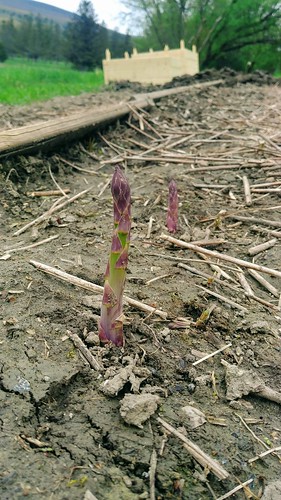

For this year, since the asparagus might be a little traumatized due to my goldenrod rootball removal process, I decided to let the green asparagus fern-out. Although, the dog has been known to occasionally knock one over, and I have been known to eat these felled spears. They taste sweeter than store bought, like a mix with sugar snap peas. Delicious.

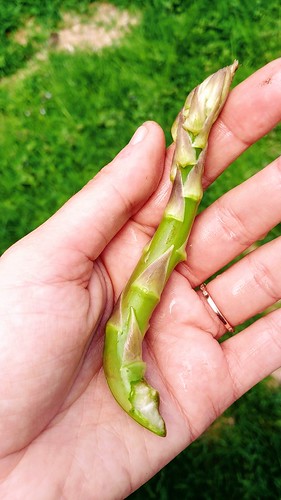
The inherited asparagus don't need much effort, just a regular check for asparagus beetles and their vertical eggs. Asparagus beetles like to overwinter in asparagus ferns, and since this garden hasn't been cared for in 10+ years, there's been a lot of cycles of asparagus beetles. That stops here.


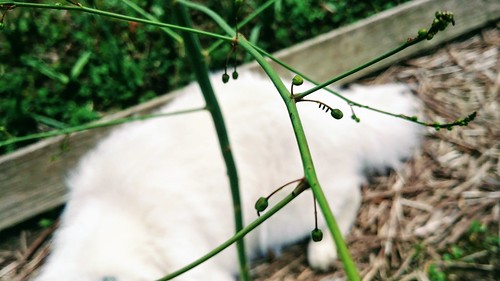


Planting Asparagus
Before discovering the inherited green asparagus, I wanted to plant my own asparagus for their ease and early sprouting. I decided to go with the Purple Passion hybrid, for some variety to complement whatever green heritage variety that's growing in the terraced rows. And so, one of my smaller raised beds will be dedicated to purple asparagus for the next 20 years...I generally followed OldWorldGardenFarms asparagus instructions for my planting process, but Gardeners.com also has a good resource on How To Grow Asparagus.
- Soak asparagus crowns in warm water for an hour. Dig a 9-12" deep trench. Place a little 3" tall mound every 10", spread an asparagus crown over each mound.

Planted May 15. - Plant a second row as before, ~18" away from the previous row. My asparagus have ~9" around them free for growing.

- Cover asparagus crowns with about half the dug out trench-dirt (approximately 3" deep). Then water (or be like me and plant in the drizzling rain).

Yes, my native soil is a gross, non-draining clay. I'm working on it. I'll be working on it for years. - About a week and a half later, I had my first purple asparagus sprout. They're a little tricky to see on the dark soil and they're soooo tiny. The second one came a day or two later, and then I had 3 more appear the day after that one. May is laaaaaaate to be planting asparagus, but I figure I'm just letting them turn to ferns anyways so it shouldn't matter too much. Next year's crop might be a little extra week, but they can't really be picked next year anyways.

- As each new sprout shows up, cover with about 3" more of the remaining trench dirt.
I didn't have any left over trench-dug dirt, but I had two bags of high quality topsoil with composted manure reserved. I did it this way partially because I planted right after filling my raised bed, and it was "full". I figured in a few weeks, the dirt would compress a little bit and then goldenrod stems + cardboard might settle down a pinch to give me more room for more dirt.
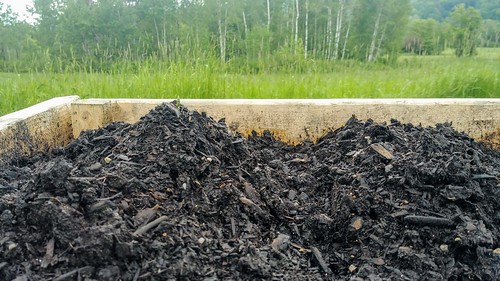
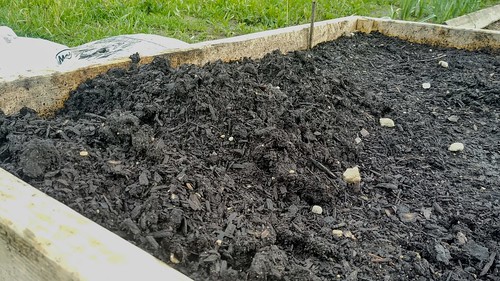
- The raised bed with 5/11 of the purple asparagus crowns covered:

- If you plant in a windy location (like an open field, as is the case for some of us), it's a good idea to secure the tall asparagus ferns to twine running between two posts. You could stake individual clusters, but that's a lot of effort.

(And yes, I need to do some serious weeding, but I plan to trowel the area a bit and then lay down mulch.)






2 comments:
The pup is such a helpful gardener. I planted my pepper seeds a few days ago and they're already sprouting like crazy. We're going to have to re-pot them again already!
Great blog you havve here
Post a Comment